Physical Address
304 North Cardinal St.
Dorchester Center, MA 02124
Physical Address
304 North Cardinal St.
Dorchester Center, MA 02124
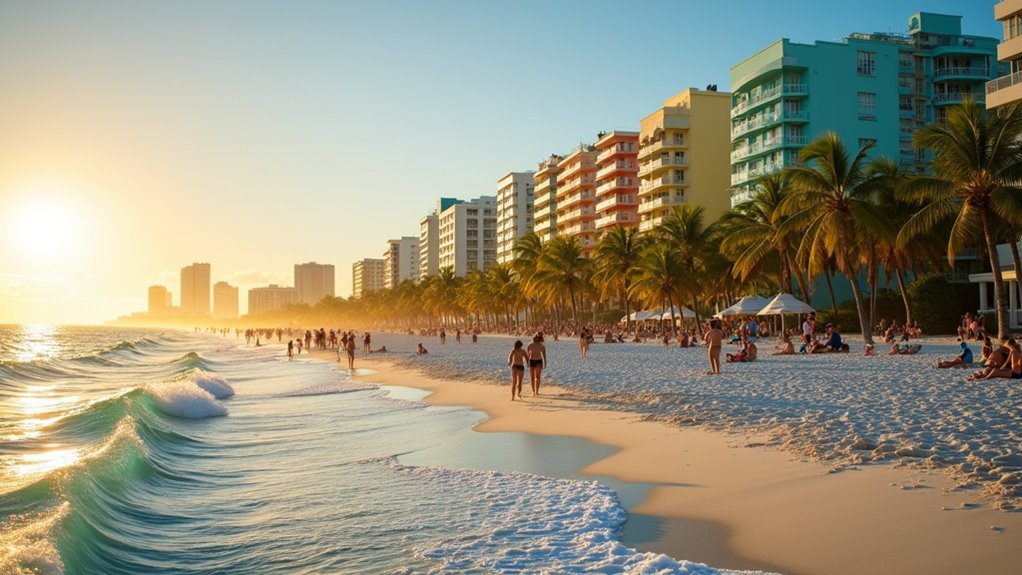
In Florida's diverse climate landscape, discovering which areas truly sizzle might surprise you—especially when planning your next sunshine getaway.
You might think all of Florida is equally hot, but the Sunshine State offers surprising temperature variations worth understanding. From the tropical Keys averaging 77°F year-round to inland cities that routinely break 95°F in summer, your experience will differ dramatically depending on where you visit. While humidity makes coastal areas feel muggy, inland regions often reach higher actual temperatures. The warming climate continues to push these patterns to new extremes, affecting everything from your vacation plans to long-term living decisions.
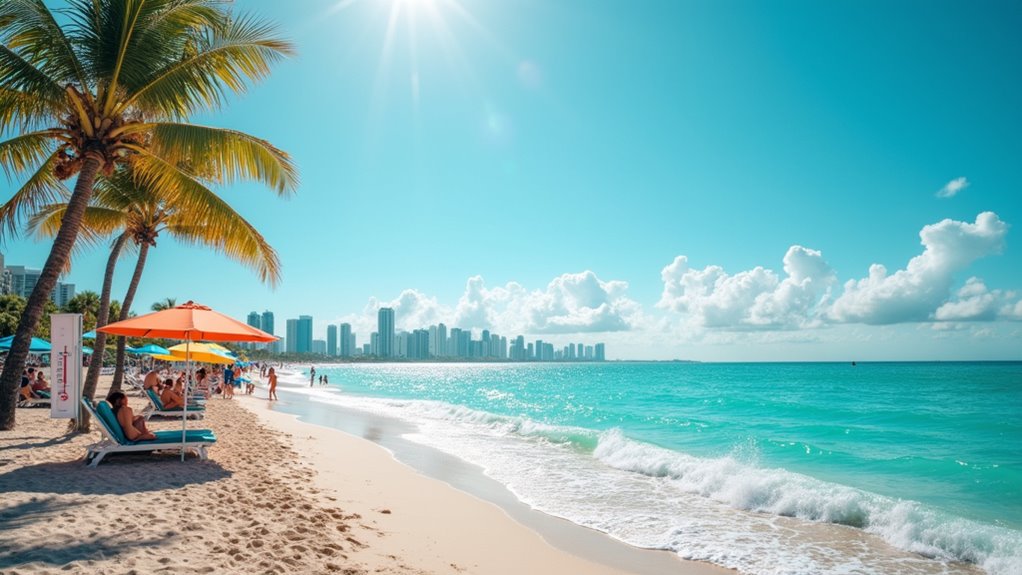
When examining Florida’s warmest locations, the Florida Keys archipelago dominates the rankings by mean temperature. Key Colony Beach and Marathon share the top spot with identical 76.95°F annual averages, despite their population difference (615 versus 8,529 residents).
Duck Key follows closely at 76.94°F, with its coastal position providing exceptional thermal stability for its 621 residents.
Big Coppitt Key and Stock Island tie for fourth place at 76.87°F, benefiting from their narrow landmasses that allow sea breezes to penetrate quickly. This moderation effect occurs because large water bodies reflect and absorb heat more slowly than land, influencing nearby air temperature.
What’s interesting is that larger mainland cities like Miami actually record higher extreme temperatures but lower annual averages than these Keys communities.
The consistent maritime influence of the Atlantic Ocean moderates temperature swings year-round in these island locations. Visitors to these warm destinations should prioritize sun protection when enjoying Florida’s tropical climate, much like travelers to Sanibel Island.
While Florida is known for its year-round warmth, examining summer temperature records reveals fascinating outliers that challenge common assumptions. Monticello holds the state’s all-time highest temperature at a scorching 109°F, recorded on June 29, 1931.
Florida’s record-shattering 109°F in Monticello proves even the Sunshine State has temperature extremes that defy expectations.
You’ll find significant regional variations across the state. Gainesville hit 103°F in June 2011, while coastal areas typically experience more moderate temperatures due to oceanic influences. For those planning road trip escapes from Florida’s heat, routes to cooler northern destinations like Oregon offer relief during peak summer months.
In summer 2024, Miami-Dade County issued heat advisories for 40 consecutive days, highlighting the intensity of South Florida’s heat.
Temperature patterns vary noticeably between locations – Miami Beach averages 87.4°F in July, while Miami Airport runs hotter at 89.5°F. If you’re looking to escape extreme heat, coastal areas offer relief compared to inland locations where temperature records are typically set. The most recent record high temperature was set in 2024, continuing the trend of increasingly frequent extreme heat events.
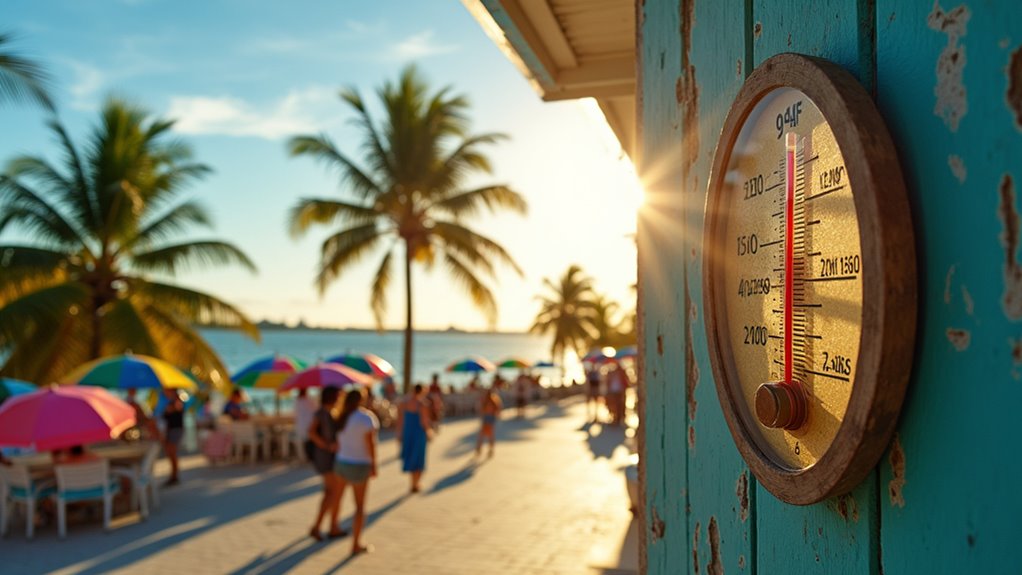
Florida’s heat persistence reveals itself most clearly through the number of days reaching or exceeding 90°F annually. Orlando leads with an impressive 97 days historically, though recent years have seen dramatic increases—reaching 127 days in 2021.
Where you’ll find the most 90°F+ days:
This heat pattern shows a concerning trend toward earlier onset and longer duration. In Orlando, the typical first 90-degree day occurs around April 9th, making any February or early March occurrences statistically unusual. Budget travelers should consider visiting affordable coastal destinations where temperatures remain more moderate than inland locations.
Although the Sunshine State earns its nickname statewide, coastal and inland areas experience remarkably different temperature patterns throughout the year. Water’s high heat capacity creates a moderating effect on coastal temperatures, resulting in smaller daily and seasonal swings compared to inland locations.
You’ll notice this difference in places like Miami Beach, which averages 87.4°F in July while areas just miles inland along Tamiami Trail reach 92.0°F. Coastal areas also cool more slowly at night, with beach locations staying 4-5°F warmer after sunset than inland spots. This phenomenon demonstrates how large water bodies buffer temperature extremes in coastal regions. When planning your Florida visit, understanding these regional variations helps avoid dangerous heat exposure that can affect unprepared travelers.
Florida’s peninsula geography ensures no location is far from water influence, but inland areas consistently experience wider temperature ranges (15-20°F daily) versus coastal zones (10-12°F). This pattern occurs year-round, with inland areas warming faster on summer days.
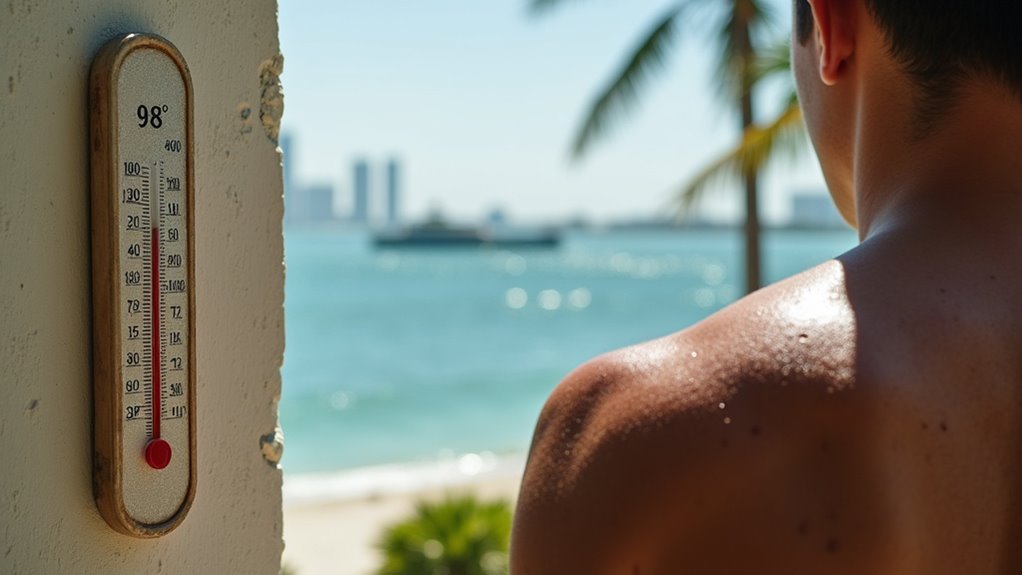
When you step outside in Florida, the thermometer reading rarely tells the complete story of how hot it actually feels. High humidity dramatically increases the heat index, creating that notorious “sticky” feeling that makes 85°F feel like 95°F.
Florida’s humidity affects your comfort and health in several ways:
Recent studies indicate that humid heat severity has been increasing across the Eastern United States, making Florida’s heat waves more dangerous than temperature readings alone would suggest.
Proper dehumidification and moisture control are essential for maintaining comfortable indoor environments during Florida’s extended warm seasons.
The high humidity can make it difficult to enjoy classic American food dishes that are typically served hot, as many visitors prefer lighter, cooling meals when dealing with Florida’s intense heat.
The Sunshine State has experienced increasingly severe heat waves in recent decades, shattering previous temperature records across multiple regions. Tampa’s all-time high of 99°F, first set in 1985, was matched again in 2020, while inland areas like Lakeland reached a scorching 105°F.
You’ll find the most extreme heat in Miami, which logged 34 extreme heat days in 2024, followed by Tampa with 23. Winter Haven’s remarkable nine consecutive 100°F+ days in June 1985 remains Florida’s longest such streak outside the panhandle. These hot spots are especially concerning as Florida now has the highest rate of heat-related illnesses nationally. When visiting during summer months, be sure to follow safety precautions to avoid heat exhaustion and dehydration.
Florida’s average temperature has risen approximately 1.6°F since 1895, with climate models predicting even stronger heat waves as El Niño intensifies in 2024. These temperature extremes considerably impact marine ecosystems, public health, and agricultural productivity.
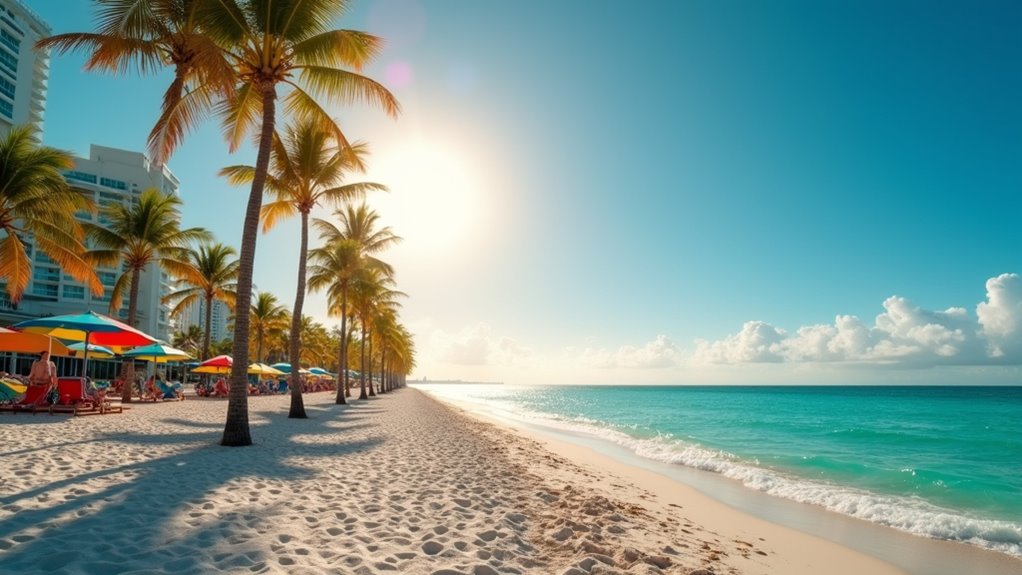
Florida’s reputation for extreme heat is directly connected to its exceptional sunshine duration. You’ll find that even during winter, the state receives nearly twice the sunlight hours of northeastern states, with Orlando averaging 70% of possible daylight as sunshine year-round.
This abundant sunshine creates temperature variations throughout Florida:
This solar advantage explains why Florida maintains warmer temperatures even when northern regions experience freezing conditions. When exploring Florida’s warm habitats, be aware that certain spider species thrive in these consistently heated environments. Florida’s low latitude position results in more direct sunlight, contributing significantly to its year-round warmth compared to higher latitude regions.
Seven Florida cities rank among America’s 50 hottest locations, though they’re outpaced by Texas’s impressive 17 entries on this national heat index. Fort Myers leads Florida’s contenders at #21 nationally, experiencing over 86 days annually where temperatures reach at least 90°F.
Florida brings the heat with seven cities among America’s 50 hottest, though Texas dominates the rankings with 17 scorching locations.
Orlando follows at #23 with 97 days of 90°F+ temperatures, while Tallahassee (#26) and Tampa (#28) round out Florida’s top national performers. The ranking is based on the average number of days exceeding 90°F annually.
When measured by extreme heat frequency, Lakeland emerges as Florida’s true champion with a remarkable 138 days above 90°F annually.
Western cities like Phoenix and Tucson still claim the absolute hottest rankings in America. While Florida can’t compete with the Southwest’s dry heat intensity, the peninsula’s combination of heat and humidity creates a distinct climate experience that remains uniquely challenging. These warm temperatures make Florida a popular road trip destination for northeastern travelers seeking to escape colder climates like Boston.
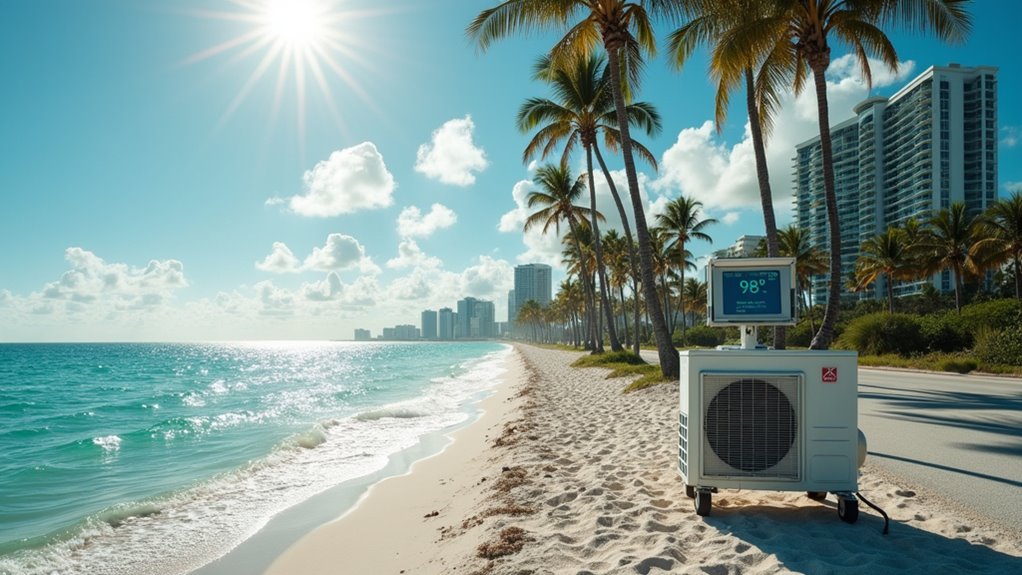
While historical climate data paints a concerning picture, Florida’s future temperature trajectory appears even more alarming. You’ll likely experience summer temperatures exceeding 83°F within two decades under moderate to high emissions scenarios. The state’s warming trend isn’t slowing down.
What you should know about Florida’s warming future:
Days exceeding 95°F in summer are expected to increase dramatically from the current 7 days to between 22 and 26 days annually.
This warming trend will impact everything from public health to agriculture, with vulnerable populations facing disproportionate risks. Senior travelers should be particularly aware of these climate changes when planning extended winter stays in Florida’s popular retirement communities.
You’ve now seen Florida’s thermal tapestry unfold like Icarus approaching the sun—beautiful yet increasingly dangerous. Whether you’re planning a move to Miami’s coastal warmth or Orlando’s inland heat, understanding these temperature patterns is essential. As climate change transforms our Sunshine State into something closer to Bradbury’s Venus, you’ll need this knowledge to navigate Florida’s hot future with proper preparation and realistic expectations.